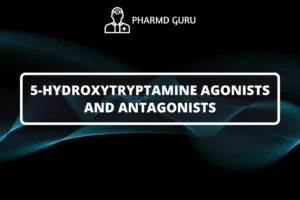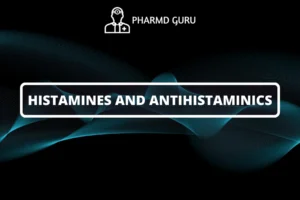CHOLINERGIC AND ANTICHOLINERGIC DRUGS AND NEUROMUSCULAR BOCKERS
Cholinergic and anticholinergic drugs, along with neuromuscular blockers, are essential components of pharmacotherapy that target the cholinergic system. The cholinergic system is involved in various physiological processes and plays a vital role in the transmission of nerve impulses. In this article, we will provide an overview of cholinergic and anticholinergic drugs, as well as neuromuscular blockers, their mechanisms of action, therapeutic uses, and implications in clinical practice.
SCROLL DOWN TO THE BOTTOM OF THIS PAGE FOR ACTUAL NOTES.
TABLE OF CONTENTS:
- Introduction
- Cholinergic System
- Cholinergic Drugs
- Cholinergic Agonists
- Cholinesterase Inhibitors
- Anticholinergic Drugs
- Neuromuscular Blockers
- Depolarizing Blockers
- Non-depolarizing Blockers
- Therapeutic Applications
Introduction
The cholinergic system, which relies on the neurotransmitter acetylcholine, is involved in various physiological functions such as muscle contraction, heart rate regulation, and neurotransmission. Cholinergic drugs act by either mimicking the effects of acetylcholine (cholinergic agonists) or inhibiting the breakdown of acetylcholine (cholinesterase inhibitors). On the other hand, anticholinergic drugs block the effects of acetylcholine by binding to cholinergic receptors. Neuromuscular blockers, a separate class of drugs, interfere with neuromuscular transmission, leading to muscle paralysis.
Cholinergic Drugs
Cholinergic drugs can be further classified into two categories: cholinergic agonists and cholinesterase inhibitors.
Cholinergic Agonists
Cholinergic agonists, also known as parasympathomimetics, activate cholinergic receptors, leading to the stimulation of the parasympathetic nervous system. Examples of cholinergic agonists include drugs like pilocarpine and bethanechol. These drugs find applications in the treatment of conditions such as glaucoma, urinary retention, and gastrointestinal disorders.
Cholinesterase Inhibitors
Cholinesterase inhibitors prevent the breakdown of acetylcholine by inhibiting the enzyme acetylcholinesterase. By increasing the concentration of acetylcholine in the synaptic cleft, these drugs enhance cholinergic transmission. Cholinesterase inhibitors are commonly used in the management of Alzheimer’s disease, myasthenia gravis, and Parkinson’s disease. Medications such as donepezil, pyridostigmine, and rivastigmine fall into this category.
Anticholinergic Drugs
Anticholinergic drugs, as the name suggests, inhibit the effects of acetylcholine on cholinergic receptors. They block the binding of acetylcholine, thereby reducing cholinergic activity. Anticholinergic drugs have various applications in medicine, including the treatment of overactive bladder, motion sickness, and chronic obstructive pulmonary disease (COPD). Examples of anticholinergic drugs include atropine, scopolamine, and tiotropium.
Neuromuscular Blockers
Neuromuscular blockers, also known as muscle relaxants, are used to induce muscle paralysis for surgical procedures or mechanical ventilation. These drugs interfere with neuromuscular transmission at the neuromuscular junction, blocking the action of acetylcholine on skeletal muscles. Neuromuscular blockers can be classified into two types: depolarizing blockers and non-depolarizing blockers. Succinylcholine is an example of a depolarizing blocker, while drugs like vecuronium and rocuronium belong to the non-depolarizing blocker category.
Therapeutic Applications
Cholinergic and anticholinergic drugs, along with neuromuscular blockers, have diverse therapeutic applications. Some examples include:
- Cholinergic agonists used in the treatment of glaucoma, urinary retention, and gastrointestinal motility disorders.
- Cholinesterase inhibitors used in Alzheimer’s disease, myasthenia gravis, and Parkinson’s disease.
- Anticholinergic drugs employed for overactive bladder, motion sickness, and COPD.
- Neuromuscular blockers utilized during surgery or mechanical ventilation to induce muscle paralysis.
ACTUAL NOTES:




